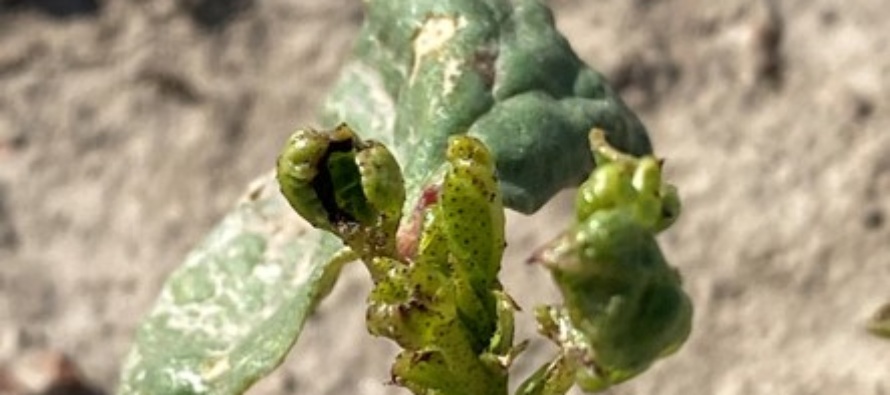High Thrips Populations and Mississippi Cotton

Related Articles
- Fertilizing Cotton with Poultry Litter 5
- Mississippi Cotton Insect Situation of 2010: A Look Back 3
- Bayer CropScience-O.A. Cleveland Weekly Cotton Commentary 0
Latest Tweets
With the development of resistance to seed treatments, foliar thrips applications are becoming increasing common. This year thrips pressure has been extremely high and in some cases multiple applications were warranted. We recommend treating when you find an average of one thrips per plant with immatures present. Generally, once immatures are present it is a good indication that seed treatments are no longer providing control. In years like this, where we have extremely high thrips numbers, in some situations you may need to treat based solely on adults. It will be important to let the plant guide your decision-making process. There have been a few calls on treating thrips after the normal window of susceptible (4 leaf stage), and in some cases treatment is warranted. If there are numerous thrips per plant present, but the plants are developing well and look healthy, I would not recommend treating. However, if you have numerous thrips present and the newest leaves are showing damage, I would consider making an insecticide application. It is going to be important to base your decisions on the damage found on the newer parts of the plants, do not make your decisions based on old damage.
What to treat with:
Orthene (Acephate):
Strengths: Relatively inexpensive, more flexibility.
Weaknesses: Decreased efficacy over the last few years. Only seeing 75 to 80% control on some populations. If aphids or spider mites are present, even in low numbers, has the potential to flare secondary pests.
Bidrin:
Strengths: Less likely to flare spider mites and aphids
Weaknesses: A little more expensive, and in some places we have also seen a decrease in efficacy with this product since it does have the same mode of action as Orthene.
Radiant/Intrepid Edge:
Strengths: Currently provides the best control. Less likely to flare secondary pests.
Weaknesses: Tends to be more expensive compared to other options. Needs an adjuvant.
There are a few things to consider when making a management decision, including cost, the level of control, and the impact on other pests. For example, Orthene and Bidrin provide relative similar control, but in some cases Bidrin is providing less control. However, Orthene is more likely to flare secondary insects compared to Bidrin. There have been several acres that were treated with Radiant or Intrepid Edge. Even though the products did a great job, these fields still required a second application anywhere from 4 to 7 days after simply due to the high thrips pressure. This may be something to consider in situations where more than one application may be needed.
Parts of Mississippi have received rainfall which can impact thrips populations. If there is a heavy rain, even if it is short lived, has the potential to kill a high number of thrips. You cannot rely on rainfall alone to help keep these high populations at bay. It is especially important to not spray before a rain or when rain is expected. There are times when rain may save an insecticide application, but generally it is only delaying it.
As cotton progresses beyond the fourth leaf stage, pay close attention to the new leaves as they emerge, as well as the number of thrips present. There may some situations that require an insecticide application after the 4-leaf stage. Remember the goal is to spray only when absolutely necessary.




Let me tell You a sad story ! There are no comments yet, but You can be first one to comment this article.
Write a comment